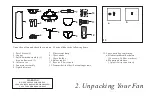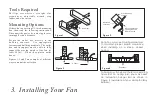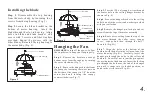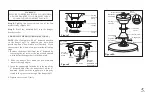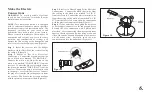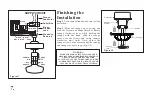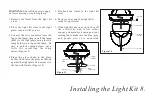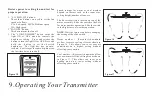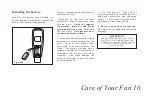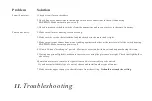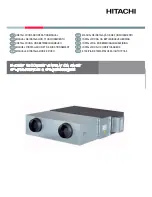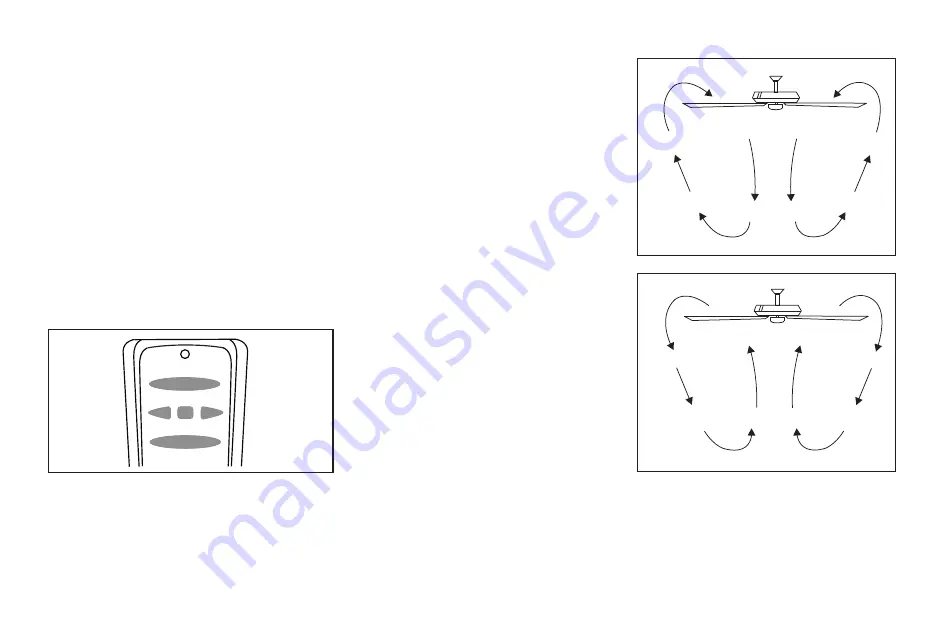
Restore power to ceiling fan and test for
proper operation.
1. " LO, MED, HI" buttons:
These three buttons are used to set the fan
speed as follows:
LO= Low speed MED= Medium speed
HI= High speed
2. "FAN OFF" button:
This button turns the fan off.
3. The "LIGHT/DIMMER" button turns the
light ON or OFF and also controls the
brightness setting. Press and release the
button to turn the light ON or OFF. Press and
h o l d t h e b u t t o n t o s e t t h e d e s i r e d
brightness. The light key has an auto-
resume, it will stay at the same brightness as
the last time it was turned off.
Speed settings for warm or cool weather
depend on factors such as the room size,
ceiling height, number of fans, etc.
The Reverse switch is located on top of the
motor assembly. Slide the switch to the Left
for warm weather operation. Slide the switch
to the Right for cool weather operation.
NOTE
: Wait for fan to stop before changing
the setting of the slide switch.
Warm weather - (Forward) A downward
air flow creates a cooling effect as shown in
Figure 16. This allows you to set your air
conditioner on a higher setting without
affecting your comfort.
Cool weather - (Reverse) An upward airflow
moves warm air off the ceiling area as shown
in Figure 17. This allows you to set your
heating unit on a lower setting without
affecting your comfort.
9.
Operating Your Transmitter
Figure 16
Figure 17
Figure 15
LIGHT / DIMMER
LO
MED
HI
FAN OFF


